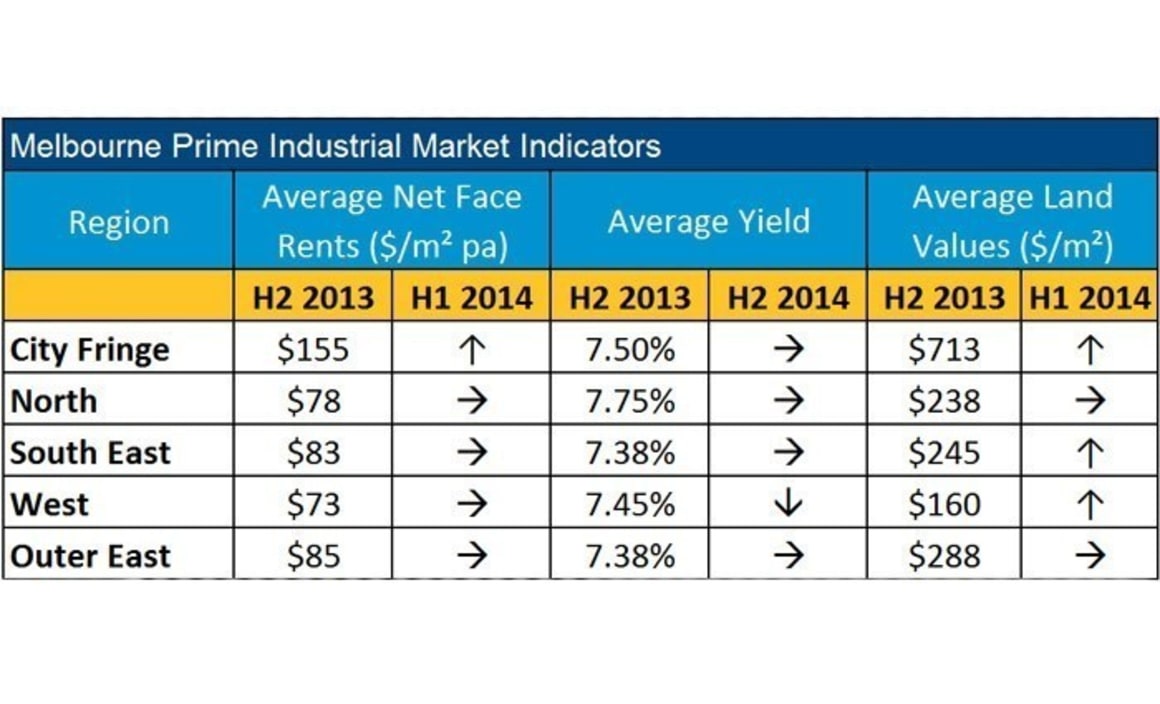Melbourne industrial market buoyed by logistics and transport sectors

The logistics and transport sectors have emerged as a shot in the arm for Melbourne' s industrial property market, in the wake of the departures of Ford and Toyota from the state.
A new first half industrial market report from Colliers International titled Investors tighten their grip, said sectors such as direct logistics and 3PL are filling the void created by the continued contraction of manufacturing in Melbourne, as the growing population demands goods, such as cars, that were once made locally and are now imported.
All those goods, it says, require land for and infrastructure for storage and transportation.
"In the northern industrial market, a number of major logistics users are currently in negotiations to lease around 120,000 square metres of space, while the west is now a hub for some of the largest distribution centres in the country", Colliers noted.
Other factors boding well for the city is the high population growth. In the year to September 2013, the city's population grew by 110,500. While the revitalisation of the residential market, particularly the land subdivision market, was also increasing demand in this sector, it added.
With production of Toyota and Ford not due to fully cease until 2017, Colliers believes that the implications of the shutdown of the motor vehicle industry in Victoria may not be felt for some time.
However it estimates that about 260 hectares of land in total is due to be vacated by car manufacturers in Victoria, of which 205 hectares is in Melbourne itself.
It sees the greatest opportunity to be in Toyota’s site in Altona North, and Holden’s and Toyota’s sites in Port Melbourne.
"The Altona North market is notoriously tightly held, and it is expected that a number of industrial developers will be eyeing the opportunity to redevelop or redeploy the site for alternative manufactures uses", said the report.
The report also went into detail about the flow on effect to the parts manufacturers currently supplying parts to Ford and Toyota.
The south-east precinct is identified as having the highest concentration of impacted industrial space in Melbourne, at almost 370,000 square metres.
"Even though the south-east does not house any major manufacturers producing cars, there is a large parts supplier industry, which is a leftover relic of the days when Holden and others used to manufacture in the area".
The Outer East also has about 270,000 square metres of space occupied by parts suppliers, the biggest of which is believed to be ANCA plant in Bayswater, which employs around 400 people.
"This plant also exports a large proportion of its product, and is expected to be largely unaffected by the local shutdowns," it added.
All up, Colliers estimates the car manufacturers and car suppliers occupy almost 1.6 million square metres of industrial space throughout Melbourne and Geelong. About 650,000 square metres of this space is occupied by the three major manufacturers, leaving a further 950,000 square metres of space occupied by parts suppliers.
Colliers said it was difficult to quantify just how many of the parts suppliers would shut down and/or vacate their premises given that many now export their product and have divserified.
It estimates that about 30% of these parts suppliers will be able to survive in the long term.
"If this figure is correct, then about 665,000 square metres of space around Melbourne and Geelong could be vacated", it concluded.
"The biggest impact will be in the south-east and outer east, as these have more scattered plants, and no large manufacturing sites that could be converted to other uses".